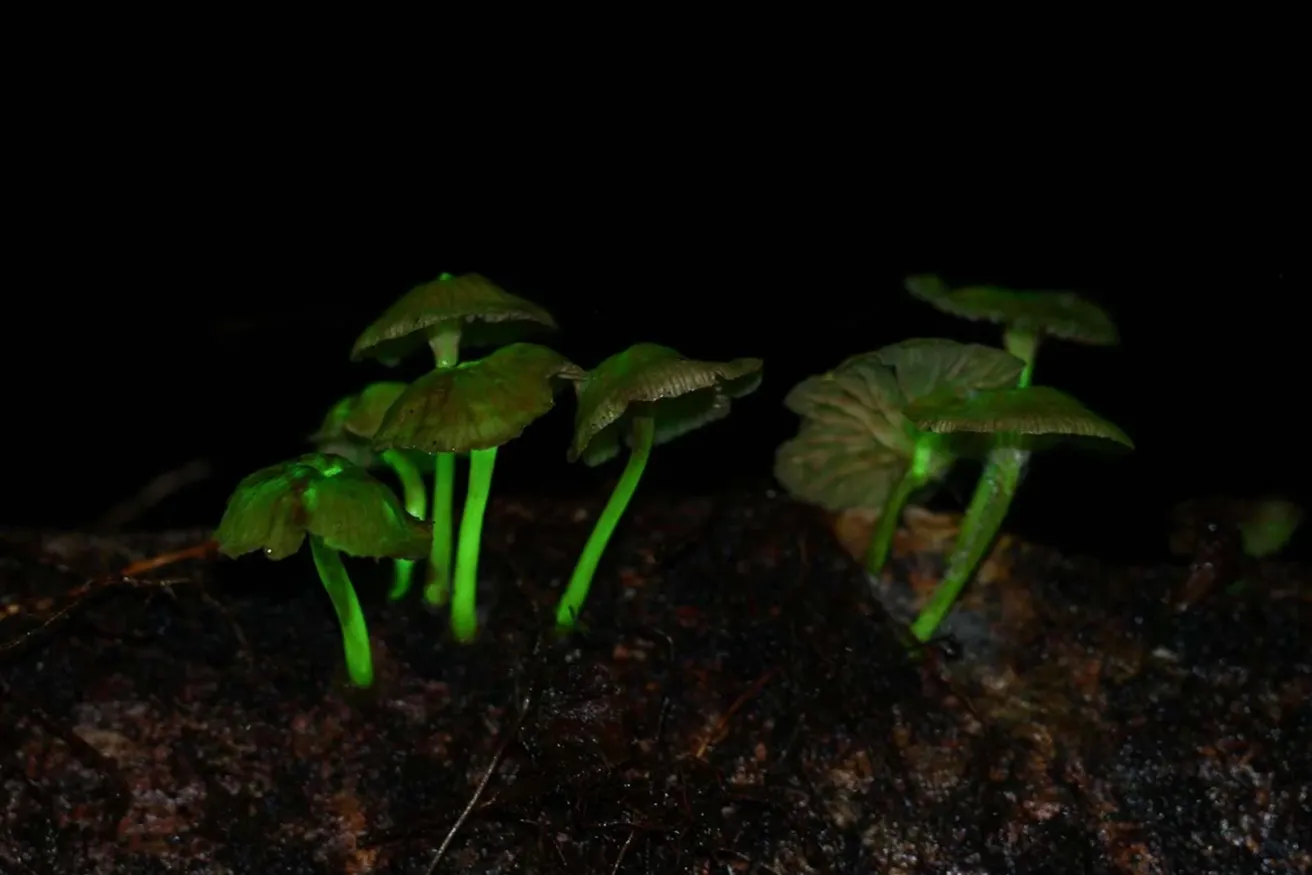Now live: The 2025 Canopy Report. Learn how Americans see trees. GET THE REPORT
As The Trees Grow, The Mushrooms Glow
Nature’s bioluminescent novelty shines light on the need to protect the Atlantic Rainforest
December 23, 2024

While stars shine in the sky above Brazil’s Atlantic Rainforest, mushrooms glow on the ground.
The southeastern region of the forest, known as the Ribeira Valley, houses the world’s largest concentration of bioluminescent mushrooms. While undoubtedly remarkable, the glowing mushrooms are just one the more than 20,000 species of plants and animals existing in the Atlantic Rainforest, about 6,000 of which are endemic to the region. In an effort to support the critical biodiversity hub, the Arbor Day Foundation is working alongside local partners to reforest the region which has lost more than 88% of its original vegetation. By reforesting the Atlantic Rainforest, the Foundation hopes to nurture habitat for thousands of species including jaguars, sloths, toucans — and glowing mushrooms.
Nearly 30% of all glowing fungi species are found in the Ribeira Valley, with new varieties regularly being discovered.
“Every time I go to the forest, I find a new species.” Dr. Cassius Stevani said.
Stevani is a Professor at the Chemistry Institute of University of São Paulo and has spent decades studying the unusual mushrooms. One species is even named after him. Stevani elevated the profile of bioluminescent mushrooms in 2015 when he and his team of researchers uncovered the long-elusive answer to one big question:
Why do they glow?
THE SCIENCE OF BIOLUMINESCENT FUNGI
As organisms, fungi — glowing or not — play a critical role in the function of ecosystems.
“Without fungi, I can say without any doubt there would be no life on Earth,” Stevani said.
Fungi recycle nutrients, are a primary driver of soil health, and can help protect trees from pests and diseases. Fungi need to spread their spores to reproduce and sometimes rely on insects and spiders to help. Typically, fungi attract bugs by emitting a scent that is carried by the wind. But because these mushrooms grow on the floor of a dense forest, they have less access to wind flow. So, they’ve adapted. Instead of trying to appeal to insects through their sense of smell, the mushrooms allure bugs with a shining green gleam.
“When the forest is in total darkness, the light can go in any direction. It’s much more efficient to attract a bug or arthropod than the wind itself,” Stevani said.
The bioluminescent mushroom’s glow can’t be seen all the time. Daylight, or even the bright light of a new moon, can interfere with the visibility of the glow.

Courtesy of Instituto de Química, University of Sao Paolo
THE SCIENCE OF BIOLUMINESCENT FUNGI
They’re abundant from October to May, Brazil’s rainy season, due in large part to the mushroom’s symbiotic relationship with the forest. Trees need fungi to maintain the health of the forest and these glowing mushrooms need the warm, humid conditions of a rainforest to thrive.
“Even when the temperature is low, we can find mushrooms as long as we have rain. So really, it’s all about humidity and humidity depends on the density of the forest,” Stevani explained.
Both preservation and reforestation in the Atlantic Rainforest are top of mind for global forestry leaders after many decades of human-caused deforestation. The United Nations named the region as one of its World Restoration Flagships, and the Arbor Day Foundation designated the Atlantic Rainforest as one of five global regions in which it is focusing more of its reforestation work. The forest is one of the most biodiverse ecosystems on the planet and is a critical source of natural resources for Brazil’s population.
In addition to acting as a hub for glowing mushrooms, the southeast region of the Atlantic Rainforest also has the potential to draw critical economic support to those living in the area of Brazil.
THE IMPORTANCE OF ECOTOURISM
The Ribeira Valley, the world’s biggest hotspot for fluorescent fungi, has one of the highest poverty rates in Brazil’s Sao Paulo state. Glowing mushrooms have the power to change that, if leveraged as an ecotourist attraction.
“It’s helpful to attract more tourists to the area and teach them it’s important to preserve nature in the forest,” Stevani said. “They’re learning that the forest is more valuable with the trees standing there. [The forest] can provide money in some way without cutting it down and killing the ecosystem.”
Brazil’s Tourism Minister Celso Sabino reported earlier this year that only 9% of the country’s current visitors are ecotourists. About two out of three visitors say they come for the sun and the beach. As an industry, tourism overall contributes less than 8% to Brazil’s GDP, compared to more than 20% in Spain, Portugal and the Dominican Republic.
“Tourism is essential for the sustainability and preservation of forests, bringing needed economic development for the local inhabitants,” Sabino said in an interview with Reuters.
Brazil’s leaders hope to boost the country’s image as an ecotourism destination in 2025 when the Amazonian city of Belem hosts the international climate summit COP30.
In the Atlantic Rainforest, Stevani is doing what he can to share the wonders of the glowing mushrooms with people around the world. His research has been featured in countless publications including National Geographic and a BBC documentary. Stevani has spent years collaborating with the IPBio Betary Reserve to give nighttime tours for people visiting the forest, hoping to see it aglow. He remarked people often see more than just mushrooms emitting light.
“We have fluorescent bugs, we have fluorescent plants,” he said. “There are many kinds of luminescent curiosities here to be explored by tourists.”



